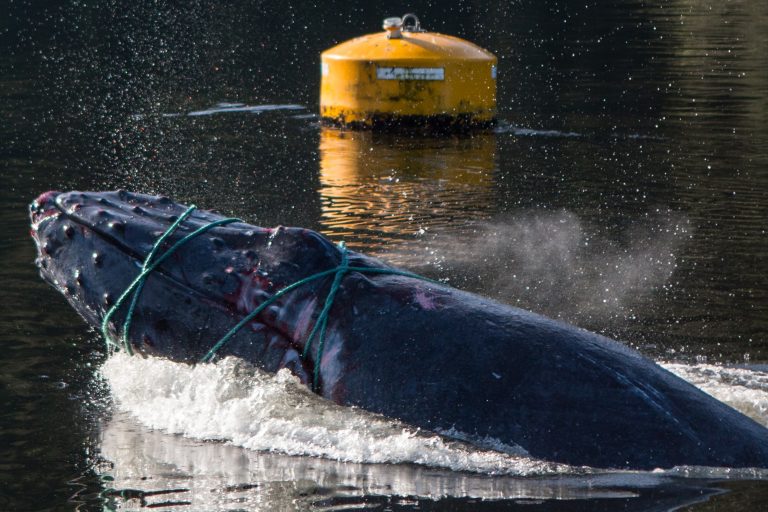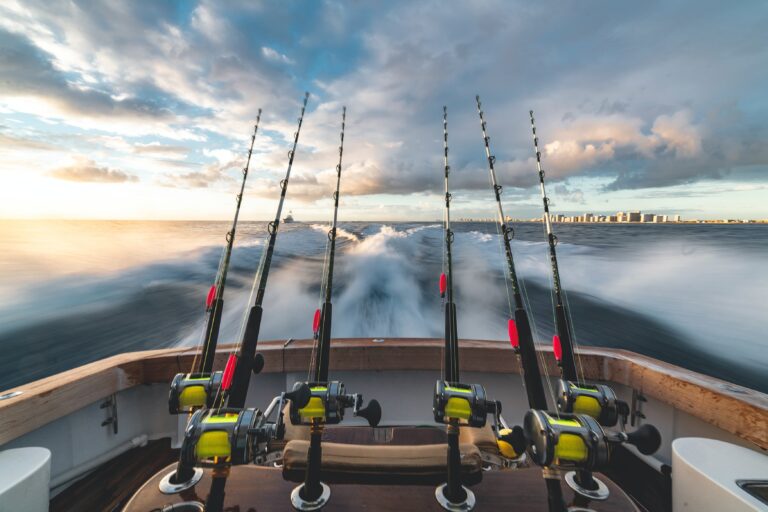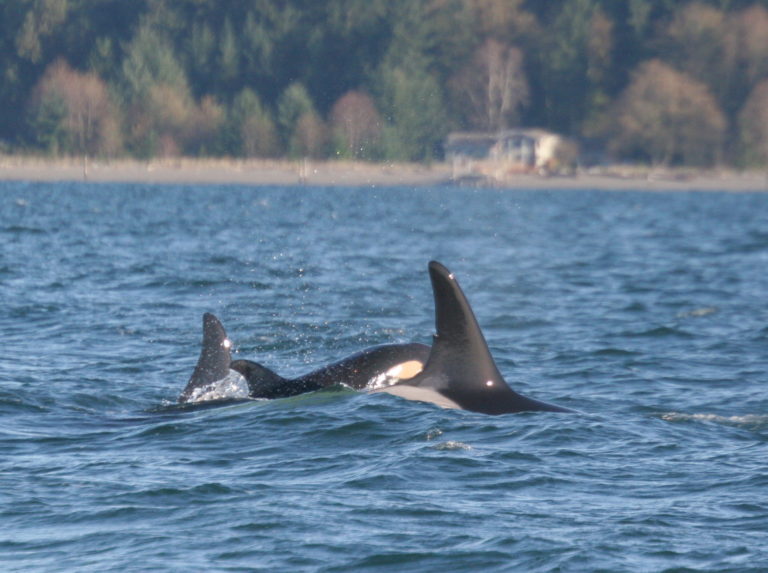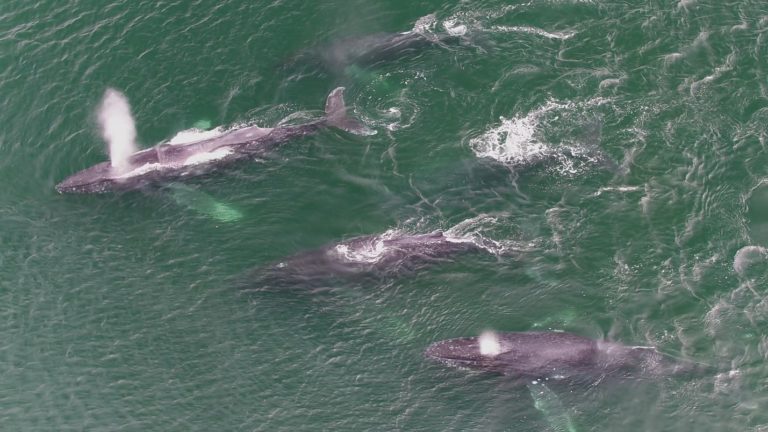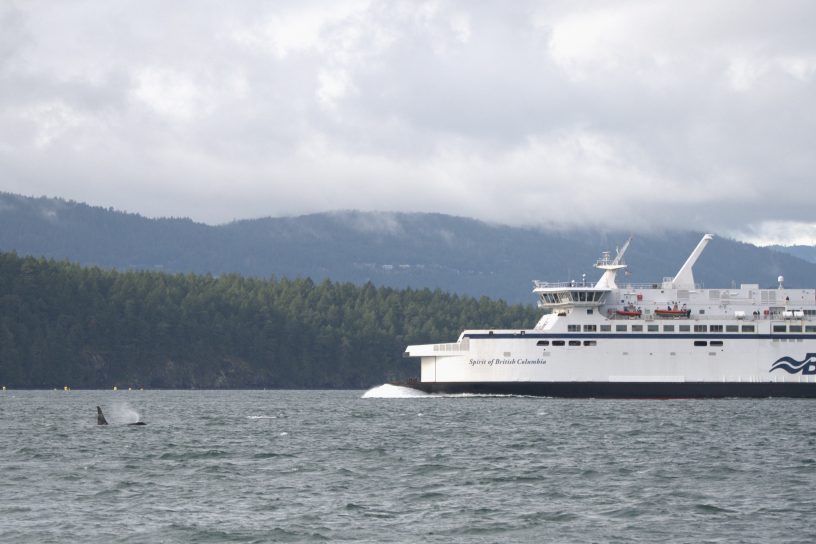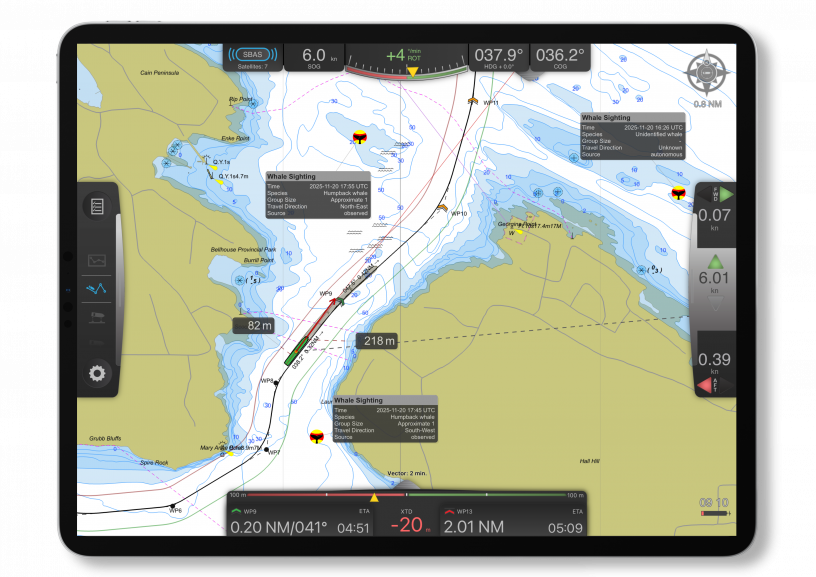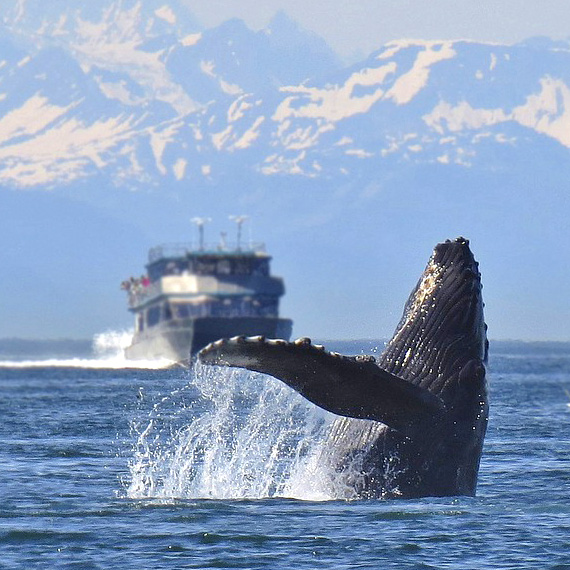Scratching the (Sea) Surface: How a Whale’s Wake Reveals Its Sex

Ocean Wise publishes first-of-a-kind study on decoding the sex of whales from environmental DNA
[September 9, 2025, Vancouver] Identifying the sex of wild whales can be surprisingly difficult, but a new study from Ocean Wise demonstrates how non-invasive environmental DNA (eDNA) sampling can help us understand these magnificent creatures like never before.
Sexing from Seawater: Application of Environmental DNA Beyond Species Detection for Cetaceans, published in the Environmental DNA journal, determined that seawater containing DNA shed by individual whales can determine the sex of wild whales, providing an alternative to biopsies.
Knowing the sex of wild whales helps scientists understand how healthy a population is and how well it is likely to recover. This is especially important for species still bouncing back from population losses experienced during the commercial whaling era.
“This research adds to a growing body of work from Ocean Wise on the use of environmental DNA to learn more about whales. Knowing the sex of wild whales gives scientists critical insight into the health of a population and its potential for recovery, informing conservation methods to contribute to flourishing whale populations,” says Lasse Gustavsson, CEO and President of Ocean Wise.
Traditionally, the sex of whales is identified by observing them with a calf, noticing physical changes such as dorsal fin height at sexual maturity (for killer whales), taking photos of their underside, or performing skin biopsies for DNA analysis. These methods can be time-consuming (can take up to 10 years to get an answer), expensive, and leave gaps in understanding population demographics.
Identifying the sex can differ significantly depending on the species. Killer whales are sexually dimorphic, meaning males and females develop distinct physical features as they mature. Adult males, for example, are known for their tall dorsals and large pectoral fins. But these features aren’t present in calves or juveniles. Fortunately, young killer whales often breach and play at the surface, giving scientists a chance to glimpse their undersides for clues to their sex. For humpback whales, it’s much more challenging.
Humpbacks lack obvious sex-based physical traits, and because of their long-life spans, it can take more than 10 years (or sometimes never) to determine the sex of an individual. If a whale is seen with a calf, it’s clearly a female, but this usually doesn’t happen until the whale is around 5 years old. Occasionally, a breaching humpback may expose a hemispherical lobe (a feature only females have), but in most photo-ID catalogues, many individuals remain unsexed.
Historically, researchers have turned to biopsies to fill these knowledge gaps. A small skin sample can provide valuable data, including the whale’s DNA for sex determination. But collecting biopsies is no small feat: it requires specialized training, permits, close vessel approaches, and can cause disturbance to the whale.
Some less invasive approaches have been developed to determine the sex of whales and dolphins, such as poop sampling, using drones to collect blow from large whales or using petri dishes mounted on poles to sample dolphin exhalations. However, these techniques can be just as challenging as collecting biopsies.
Previous studies have shown that whale flukeprints – the slicks of water left behind after a whale dives – contain enough eDNA to identify species, and in some cases, individual genetic profiles. Researchers decided to take this a step further to determine if flukeprints could also tell us whether a whale is male or female.
Killer whales were an ideal species to test this on because the sex of most individuals in well-studied populations, such as Southern Residents, is already known. This allowed researchers to validate our results by comparing eDNA findings to known sex data.
For this study Ocean Wise researchers screened 67 flukeprints from killer whales (both Southern Residents and Bigg’s) and 18 from humpback whales, using a genetic marker (ZFX/ZFY) that targets the sex chromosome.
The method showed higher overall gene detection success in killer whales (53%), though due to their tight social groupings, only about half of the samples could be confidently linked to the sex of a specific individual. In contrast, gene detection in humpbacks was slightly lower (44%), but all successfully amplified samples accurately matched the known sex of the individual (100%). This suggests that the method shows strong promise, especially for more solitary species like humpbacks or other large whale species.
“We are really excited to see this cost-effective and minimally invasive method work so well, especially for humpback whales. One of the biggest data gaps for large whale species is sex ratios, which is especially important to understand as they continue to recover from previous population losses through commercial whaling. As with most new approaches, it still needs some fine-tuning to improve accuracy and consistency, especially for species which associate in groups such as killer whales, but this research marks an important step toward scalable, less invasive methods of studying and protecting these iconic species,” says Dr. Chloe Robinson, Advisor and Technical Lead of the Ocean Wise Whales Initiative.
“At Prince of Whales, our passion is connecting people with whales, and we’re thrilled to partner with Ocean Wise on research that deepens our understanding of these magnificent animals while safeguarding their future. We are inspired to see how new research methods and tools can shape the future of marine research and conservation,” saysElspeth McGillivray, General Manager of Prince of Whales, North Island Kayak and Sea Vancouver.
This study was made possible thanks to the generous support of Prince of Whales Whale Watching, North Island Kayak, and Fisheries and Oceans Canada’s Coastal Environmental Baseline Program (CEBP).
Media Contact
Rosemary Newton
Communications Manager
[email protected]
About Ocean Wise
Ocean Wise is a global conservation organization on a mission to build communities that take meaningful action to protect and restore our ocean. Through research, education, innovation, and collaboration, we are turning the tide on three major ocean challenges: plastic pollution, overfishing and climate change. By creating communities of concern that include industries, governments, and everyday citizens, we create a future where our ocean and the people who depend on it can thrive. Ocean Wise is headquartered in Vancouver, British Columbia with work reaching over two dozen countries around the globe.
Posted September 8, 2025 by Rosemary Newton
